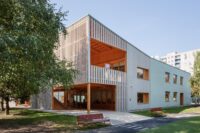- Home
- Articles
- Architectural Portfolio
- Architectral Presentation
- Inspirational Stories
- Architecture News
- Visualization
- BIM Industry
- Facade Design
- Parametric Design
- Career
- Landscape Architecture
- Construction
- Artificial Intelligence
- Sketching
- Design Softwares
- Diagrams
- Writing
- Architectural Tips
- Sustainability
- Courses
- Concept
- Technology
- History & Heritage
- Future of Architecture
- Guides & How-To
- Art & Culture
- Projects
- Interior Design
- Competitions
- Jobs
- Store
- Tools
- More
- Home
- Articles
- Architectural Portfolio
- Architectral Presentation
- Inspirational Stories
- Architecture News
- Visualization
- BIM Industry
- Facade Design
- Parametric Design
- Career
- Landscape Architecture
- Construction
- Artificial Intelligence
- Sketching
- Design Softwares
- Diagrams
- Writing
- Architectural Tips
- Sustainability
- Courses
- Concept
- Technology
- History & Heritage
- Future of Architecture
- Guides & How-To
- Art & Culture
- Projects
- Interior Design
- Competitions
- Jobs
- Store
- Tools
- More
The Must-Take Steps to Maximize Space and Accessibility in Modern Workplaces

Modern workplaces are evolving rapidly, spurred by the need for flexibility and an inclusive environment. Open spaces and collaborative areas are becoming commonplace, yet many organizations struggle to optimize these environments for space efficiency and accessibility. Designing a workplace that caters to various needs is essential for promoting productivity and inclusivity. This can be achieved through well-planned strategies that utilize design trends and modern technologies. By concentrating on key areas such as space layout, furniture selection, and accessibility features, companies can create a functional and inviting atmosphere. Taking concrete steps will help provide all employees with the necessary tools to work effectively, enhancing overall workplace satisfaction.
Table of Contents
ToggleRedefining Space Layout
The first step in maximizing workplace space is a practical layout that allows for free movement and encourages collaboration. A well-thought-out workspace layout takes into account both individual workstations and common areas. Creating open areas to facilitate team interactions while providing private spots for focus-intensive tasks is essential. Efficient zoning of the workplace can help achieve this equilibrium. Ensuring that the layout accommodates accessibility for all is paramount. This includes wide aisles, properly designed entry points, and placement of restrooms and elevators. Researching and implementing tailored Elevator Solutions in Raleigh can also enhance layout circulation, ensuring accessibility for all employees across multiple floors. This becomes even more critical when accounting for the diverse needs and accessibility purposes, ensuring everyone feels welcome and included in the workspace.

Furniture Selection for Functionality
Choosing the right furniture is pivotal in maximizing space and enhancing accessibility in modern workplaces. Multi-functional furniture—such as adjustable desks or collapsible tables—can be a game changer. These pieces save space and accommodate various tasks and work styles. Ergonomic furniture is equally essential, tailored to prevent discomfort or injury, especially for employees who spend long hours at desks. In selecting furniture, it’s necessary to consider various user needs, ensuring that all items are easily accessible. Clear pathways and organized spaces can create a less cluttered environment. This attention to detail can lead to increased comfort and productivity among employees.
Technology Integration for Seamless Communication
Incorporating the right technology can further maximize space and enhance accessibility in any organization. Tools such as video conferencing, collaboration software, and
enterprise instant messaging software reduce the need for physical meeting rooms, allowing businesses to optimize their layouts. Hot-desking technologies can also improve flexibility, providing workspace options tailored to employee needs. Additionally, integrating innovative technologies can facilitate ease of access. For example, voice-activated systems can aid those with mobility challenges. Furthermore, ensuring high-speed internet and equipment such as large monitors can enhance overall productivity. By investing in technology, organizations can create dynamic spaces catering to diverse working methods.
Focus on Natural Light and Design Aesthetics
Light and design can drastically influence employee well-being and productivity within the workplace. Maximizing natural light through windows and skylights creates an uplifting environment while reducing reliance on artificial lighting. Proper lighting can decrease fatigue and improve focus, helping employees feel more alert and engaged throughout the day. Complementing natural light with appropriate colors and textures can elevate the workspace’s aesthetic appeal. Open-concept designs that incorporate greenery and personal artwork contribute to a friendly ambiance. Balancing aesthetics with functionality is crucial; investing in quality finishes can enhance the overall design without compromising accessibility. The aim should be to create a harmonious environment that nurtures creativity, promotes well-being, and serves functional needs effectively.
Implementing Accessibility Standards
Adhering to established accessibility standards is non-negotiable for any modern workplace. These regulations ensure that spaces are tailored to accommodate individuals with disabilities, fostering inclusivity. Organizations must review their current facilities, identifying areas that may fall short of these requirements. This can involve everything from accessible entrances and signage to adjustable desks and visual alarms. Moreover, providing training to staff members about the importance of accessibility can help cultivate a caring workplace culture. Engaging with accessibility consultants can provide insights and guidance on effectively adjusting the organization’s facilities. Ultimately, this commitment to inclusivity can significantly enhance employee satisfaction and retention, effectively securing a diverse workforce.

Feedback and Continuous Improvement
Finally, creating an adaptable workspace involves seeking feedback and implementing continuous improvements. Regularly engaging employees about their experiences and needs can yield valuable insights regarding the workplace environment. Surveys or focus groups can effectively gather this information, allowing everyone to contribute to design evolution. Those insights should then be analyzed, with proactive adjustments made to the workspace based on stakeholder input. Understanding changing employee needs can help organizations stay ahead of trends. Reinventing workspace policies or design layouts will ultimately create a more satisfied, engaged workforce. Creating a feedback loop fosters a culture of openness that encourages continuous growth and improvement within the workplace.
Maximizing space and accessibility within modern workplaces encompasses several crucial elements, from re-evaluating layout designs to selecting the right furnishings and technology. Employers must commit to creating environments that consider everyone’s needs while ensuring usability. Focusing on a functional yet inviting design fosters an inclusive atmosphere. Engaging employees in the improvement process allows organizations to develop dynamic workplaces that evolve with their workforce’s requirements. Accessibility should not just be a compliance issue but a core value that drives workplace culture and policies. Prioritizing these strategies enhances the employee experience and improves productivity and well-being.
illustrarch is your daily dose of architecture. Leading community designed for all lovers of illustration and #drawing.
Submit your architectural projects
Follow these steps for submission your project. Submission FormLatest Posts
10 Interesting Facts About Zaha Hadid
Zaha Hadid was a visionary architect whose fluid forms, bold experimentation, and...
Online 3D Terrain Mapping Tools for Urban and Landscape Design in 2025
A curated guide to the best online 3D terrain mapping tools in...
Common Emergency Repairs Every Homeowner Should Be Ready For
For most of us, when something goes wrong, we have a propensity...
Designing, Retrofitting, and Valuing Non-Standard Homes in Britain
Britain’s housing stock carries a quiet contradiction. From the street, many homes...












Leave a comment